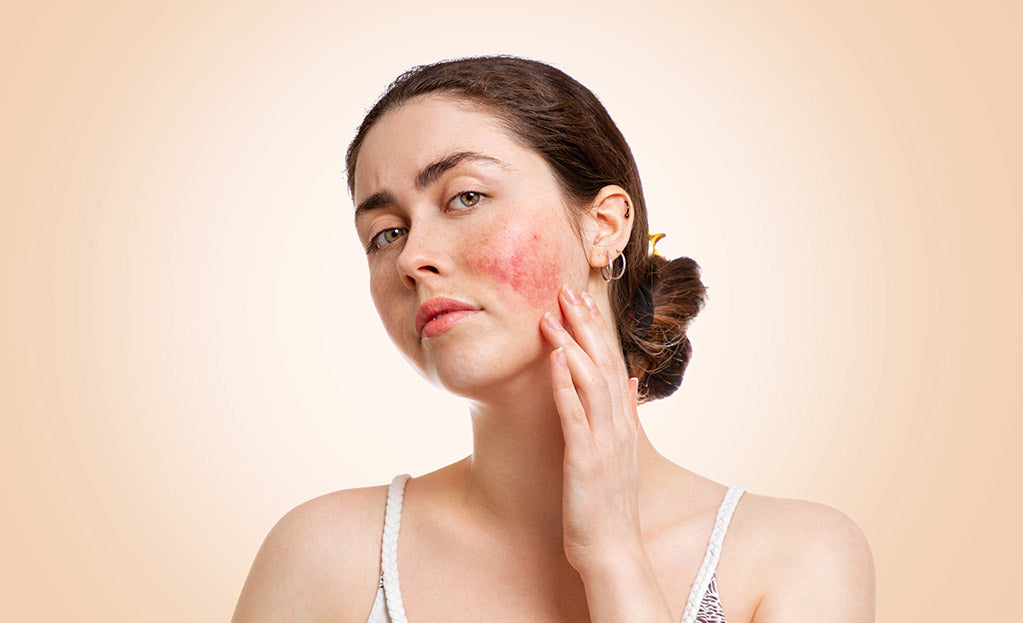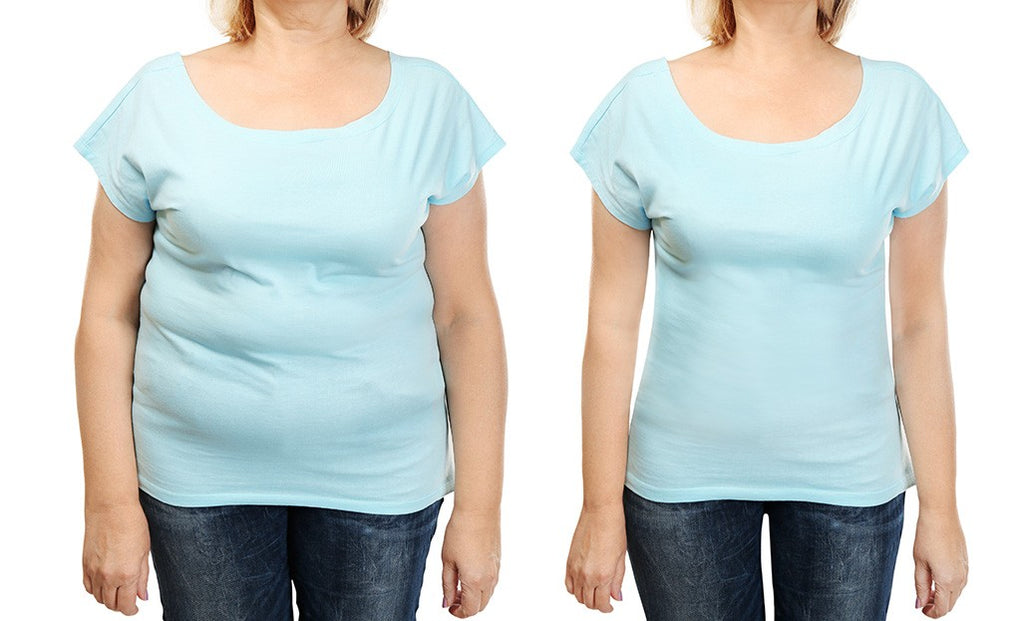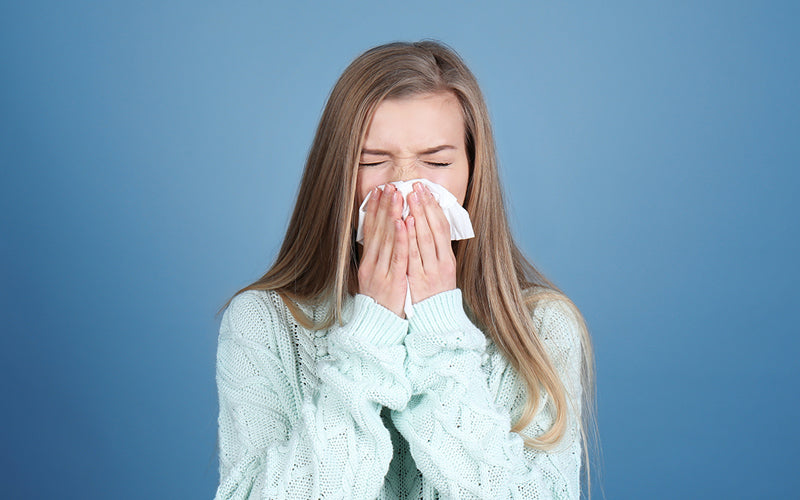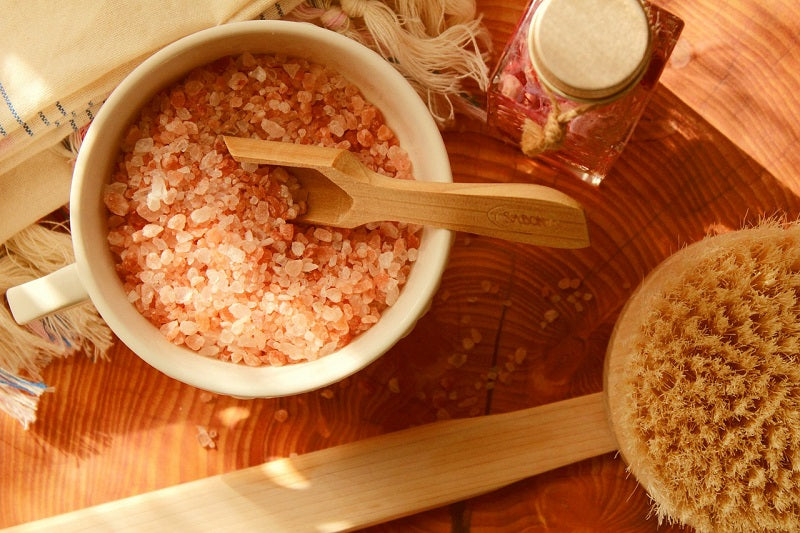Top 5 Healing Foods for Inflamed Skin
Inflamed skin not only hurts physically; it can also totally deplete you of self-esteem. It’s hard, especially when you feel like you’ve tried everything! The best approach is a holistic one – combining specific skin nutritional supplementation with lifestyle changes and professional intervention. Add these skin-nourishing foods into your diet every day for one month (especially the celery and cucumber juice), document your before and after pictures and see if you have noticed a difference!
Celery and Cucumber Juice

Celery has an abundance of anti-inflammatory compounds ideal for nourishing the gastrointestinal tract and skin. Celery extracts have shown promising nourishment to the liver, cardiovascular, lymphatic and connective tissues. Its anti-bacterial and anti-fungal properties help with many pathological conditions, therefore, it’s excellent for the skin/gut microbiome and candida overgrowth.
Celery consists of vitamins such as beta‐carotene, ascorbic acid, folic acid and minerals (sodium, potassium, calcium, and magnesium), silica, fibre, and chlorophyll, all of which are very nourishing to the skin matrix. It’s also about 95% water so it’s a great skin hydrant as well.
Cucumber is another skin-boosting superfood as it’s rich in B-vitamins, silica, water, zeaxanthin, lutein, pantothenic acid, and vitamin C. We love cucumber for skin health as it naturally improves hyaluronic acid and elastin which are vital for healthy collagen and anti-wrinkle effects.
Flaxseed Oil or Freshly-Ground Flax Seeds
Flaxseed oil is enriched with alpha-linolenic acid (ALA), an omega-3 essential fatty acid that has been shown to decrease skin reactivity and mediate immune-related inflammation. Flax seeds may also improve blood sugars, cognition, menopausal symptoms and skin health. Sensitive, inflamed, rough, dry skin can benefit from increasing flax seeds and oils in the daily diet. Research also suggests that flax seeds balance inflammation and support skin membranes for healthy aging.
Acerola
Malpighia emarginata DC or acerola is known to be a skin and vitality superfood due to its high antioxidant, vitamin C and carotenoid content. The fruit contains an exorbitant amount of ascorbic acid in the range of 1500–4500 mg/100 g, which is around 50–100 times than that of orange or lemon. Just 3 acerola cherries per day would be sufficient for the adult dietary requirement of vitamin C. This delicious fruit is also abundant in skin-loving nutrients such as vit A, iron, calcium and B-vitamins. Studies have promising health benefits of acerola for the cardiovascular system, liver, and blood sugar regulation. Perfect for a skin healing detox!
Kefir Grains
Kefir contains an abundance of probiotics and antimicrobial substances for skin health including bacteriocins, lactic acid, acetic acid, and hydrogen peroxide. It also helps in the inhibition of inflammatory bacteria like S. aureus, S. salivarius, S. pyogenes, P. aeruginosa, C. Albicans, S. Typhimurium, L. monocytogenes and E. coli growth.
Kefir grains are amazing because they are super easy to make!
Better yet, you can add them to skin-boosting herbal teas:
- Hibiscus / Rosehip
- Green tea
- Lemon and ginger
- Echinacea
- Cinnamon
Watch our Happy Healthy You Nutritionist make her herbal tea coconut kefirs here.
Raw Cacao
Cacao flavanols have shown prebiotic activity in the gut microbiome and improved liver detoxification of accumulated fats. Increasing the combination of raw cacao and lycopene over four weeks shows promising results for enhanced liver metabolism, particularly regarding skin detoxification.
Raw cacao is also an excellent anti-inflammatory food showing favourable attributes for reversing skin aging, excessive sebum production and balancing the skin microbiome. Cacao is a great antioxidant for skin-related issues as it helps to protect the dermal structures and elasticity integrity from deterioration.
Cacao is rich in:
- Essential fatty acids
- Antioxidants
- Magnesium
- Iron
- Polyphenols
Turmeric

Turmeric contains a compound called curcumin. We love curcumin for skin health because it is renowned for anti-inflammatory actions. This golden super-herb has been therapeutically proven to improve acne, alopecia, atopic dermatitis, facial aging, pruritus, psoriasis and vitiligo. In combination with black pepper turmeric’s bioavailability increases by 2000%. This herb is a skin and hair powerhouse which helps in reducing inflammation, balancing immune stressors, and improving digestion. This herbal synergy is a must-have when it comes to skin healing and protection.
Turmeric is a herb for vitality and works on so many different levels – inflamed skin condition, allergies, and wrinkles could benefit from a little curcumin. If you’re currently suffering from inflamed skin, and aren’t sure where to begin, these are our nutritionist-approved top 5 foods to start implementing into your daily regime.
Stuck for ideas? You can add them into smoothies, lattes, protein balls – time to get creative! You can also check out our Recipes section for tasty and healthy turmeric drinks and dishes.
A Final Note
Always remember that you are so much more than your skin. Your skin does NOT define your worth. You are beautiful inside and out (really, truly you are!). You deserve self-love and kindness, so remember to be kind to yourself in times of imbalances. Listen to your body and your body will listen back.
REFERENCES
Boelsma E, Hendriks HF,Roza L.(2001). Nutritional skincare: health effects of micronutrients and fatty acids. The American Journal of Clinical Nutrition. May;73(5):853-64.
https://doi.org/10.1093/ajcn/73.5.853
Faria-Silva et al. (2020). Feeding the skin: A new trend in food and cosmetics convergence. Trends in food science and technology. V.95 pp. 21-3221 - 32.
https://dx.doi.org/10.1016/j.tifs.2019.11.015
Hedayati N. Naeini MB, Mohammadinejad A, Mohajeri SA. (2019). Beneficial effects of celery ( Apium graveolens ) on metabolic syndrome: A review of the existing evidences. Phytotherapy Research. Dec;33(12):3040-3053.
https://doi.org/10.1002/ptr.6492
Labban L. (2014). Medicinal and pharmacological properties of Turmeric (Curcuma longa): A review. Journal of Pharmaceutical and Biomedical Sciences. Vol 5:17-23 .
https://www.academia.edu/10986107/
Lolou V. & Panayiotidis MI. (2019). Functional Role of Probiotics and Prebiotics on Skin Health and Disease. Fermentation. 5(2), 41.
https://doi.org/10.3390/fermentation5020041
Singh M, Agarwal S, Agarwal M, Rachana. (2020). Benefits of Theobroma cacao and Its Phytocompounds as Cosmeceuticals. Springer. Plant-derived Bioactives. pp 509-521.
http://doi-org-443.webvpn.fjmu.edu.cn/10.1007/978-981-15-1761-7_21
da Mata et al. (2020). Benefits of turmeric supplementation for skin health in chronic diseases: a systematic review. Critical Reviews in Food Science and Nutrition.
https://doi.org/10.1080/10408398.2020.1798353
Mukherjee PK, Nema NK, Maity N, Sarkar BK. (2013). Phytochemical and therapeutic potential of cucumber. Fitoterapia. Jan;84:227-36.
https://doi.org/10.1016/j.fitote.2012.10.003
Nema NK, Maity N, Sarkar B, Mukherjee PK. (2010). Cucumis sativus fruit-potential antioxidant, anti-hyaluronidase, and anti-elastase agent . Archives of Dermatological Research. May;303(4):247-52.
https://doi.org/10.1007/s00403-010-1103-y
Parikh et al. (2019). Dietary Flaxseed as a Strategy for Improving Human Health. Nutrients. May; 11(5): 1171.
https://dx.doi.org/10.3390%2Fnu11051171
Prakash A & Baskaran R. (2018). Acerola, an untapped functional superfruit: a review on latest frontiers. Journal of Food Science and Technology. Sep;55(9):3373-3384.
https://doi.org/10.1007/s13197-018-3309-5
Sowbhagya HB. (2014). Chemistry, technology, and nutraceutical functions of celery (Apium graveolens L.): an overview. Critical Reviews in Food Science and Nutrition. 54(3):389-98.
https://doi.org/10.1080/10408398.2011.586740
Uthpala TGG, Marapana U, Lakmini PC & Wettimuny DC. (2020). Nutritional Bioactive Compounds and Health Benefits of Fresh and Processed Cucumber (Cucumis Sativus L.). Sumerianz Journal of Biotechnology. pp 75-82.
https://10.13140/RG.2.2.17510.04161
Vaughn AR, Branum A, Sivamani RK. (2016). Effects of Turmeric (Curcuma longa) on Skin Health: A Systematic Review of the Clinical Evidence. Phytotherapy Research. Aug;30(8):1243-64.
https://doi.org/10.1002/ptr.5640
Wiese et al. (2019). Prebiotic Effect of Lycopene and Dark Chocolate on Gut Microbiome with Systemic Changes in Liver Metabolism, Skeletal Muscles and Skin in Moderately Obese Persons. BioMed Research International. Jun 2;2019:4625279.
https://doi.org/10.1155/2019/4625279























